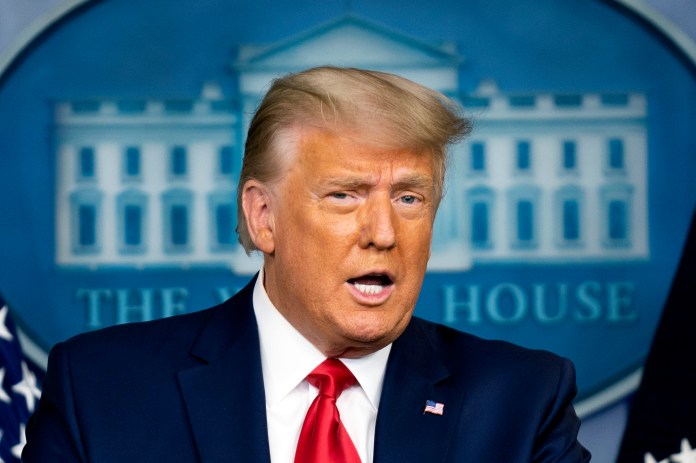A week out from the COP26 climate negotiations in Glasgow, all eyes are on two nations: China and the United States. Together, the superpowers are responsible for more than 40% of global carbon emissions. U.S.-China relations have been fractious in recent years, and whether they can cooperate on climate action is crucial to success at COP26 and beyond.
U.S. progress on climate change went backwards under the Trump administration, but President Joe Biden has brought the nation back to the table. Biden wants to cooperate with China in this critical policy sphere, raising hopes of a less adversarial bilateral relationship.
Throughout 2021, however, U.S.-China relations have become increasingly strained. And China’s cooperation at COP26 is far from guaranteed—President Xi Jinping is reportedly unlikely to attend the negotiations.
Together, China and the U.S. could supercharge global progress on climate action. But if they fail to cooperate, the two nations risk a race to the bottom on climate change—with dire consequences for all.

An emissions snapshot
China currently accounts for 28% of global carbon emissions. While its emissions rose rapidly during the 2000s and a good part of 2010s, emissions growth has slowed in recent years thanks to dedicated government efforts to improve energy security and promote renewable energy.
China made its first international commitments on climate change at the 2015 Paris climate talks, including a pledge for carbon emissions to peak by around 2030.
In 2017, U.S. President Donald Trump pledged to withdraw from the Paris Agreement, giving China the chance to take the global leadership mantle on climate action. It looked like China might assume this role when, last year, it pledged to become carbon-neutral by 2060.
China is on track to achieve its 2030 renewable energy and carbon intensity targets. But the target is considered inconsistent with the global goal of limiting warming to 1.5℃ this century.
In the U.S., Biden has pledged to reverse the climate policy damage wrought by the Trump presidency. He will pursue ambitious national initiatives and international cooperation, including with China.
Read more: Glasgow showdown: Pacific Islands demand global leaders bring action, not excuses, to UN summit

On again-off again
In April this year, Biden sent U.S. Climate Envoy John Kerry to China to discuss collective climate action. During the visit, the two countries released a joint statement declaring a commitment to cooperation.
However by September, China’s tune had changed. Last month, during Kerry’s second visit to China, Chinese Foreign Minister Wang Yi declared cooperation on climate change cannot be divorced from the overall situation of China-US relations.
This statement implied China would withhold cooperation on climate change until the U.S. gave ground on broader strategic issues. Examples include the US relaxing its stance on:
- visa restrictions on Chinese students and members of the Chinese Communist Party (CCP) and their families
- sanctions against Chinese leaders, officials and government agencies
- its request to extradite Huawei executive Meng Wanzhou from Canada over fraud allegations.
But as ever, the relationship is complex. Shortly after Kerry’s visit to China, presidents Biden and Xi spoke on the phone covering topics including climate change. Two weeks later, Xi announced China will no longer build new coal-fired power projects abroad.
But we cannot deduce from this announcement that China has decided to cooperate with the U.S. on climate. China has been scaling back its financing of coal-fired power stations abroad for years.

Fork in the road
Cooperation between China and the U.S. will remain highly unpredictable. The key question is whether competition between the two nations on climate action will be constructive or destructive.
Under a constructive scenario, the U.S. and China would compete to ramp up their investments in clean energy, advance their technological capabilities and build internationally competitive industries. They would also compete to help emerging countries reduce their emissions.
China and the U.S. would both seek to prove the superiority of their respective governance models by making rapid progress on climate change. In other words, does China’s party-state, quasi-Communist model offer the most desirable path forward? Or is the U.S. model of democratic capitalism the better option?
By contrast, destructive competition between the U.S. and China would have dire consequences for the climate. First, it would make the international flow and diffusion of green technologies difficult.
For example, the U.S. controls advanced semiconductor technologies required for electric vehicles (EVs) while China is leading the world in EV battery technologies. If the nations began restricting tech exports to each other, advancement in electric vehicles would significantly slow.
Read more: What is COP26 and why does the fate of Earth, and Australia’s prosperity, depend on it?

It may also become more complex to establish global standards for new major clean energy technologies such as offshore wind systems. Global markets for particular clean energy technologies would become fractured and much smaller than they would otherwise be.
With a reduced market size, new climate technologies and products would then take longer to become affordable, slowing their global uptake.
Second, an effective system for global climate governance requires most nations, if not all, to participate. Yet, without trust between the US and China, such a system would be untenable.
Finally, the domestic climate actions of both the US and China may be adversely affected if tension between the two countries intensifies.
In the U.S., hawkish politicians and media would likely denigrate the administration’s position on climate change as its political weakness when dealing with China.
The Chinese ruling party would likely face rising nationalist sentiment against further climate actions which would be viewed as caving in to U.S. demands. This nationalist view has long argued that the West presses China on climate actions simply to hold back the country’s development.
How the U.S. and China act and react on climate issues will continue to be of supreme importance, at COP26 and beyond. But it’s the long-term competitive dynamics between the two countries that will fundamentally determine global climate action.
Read more: Who’s who in Glasgow: 5 countries that could make or break the planet’s future under climate change
Hao Tan, Associate Professor, Newcastle Business School, University of Newcastle; Elizabeth Thurbon, Scientia Associate Professor in International Relations / International Political Economy, UNSW; John Mathews, Professor Emeritus, Macquarie Business School, Macquarie University, and Sung-Young Kim, Senior Lecturer in International Relations, Discipline of Politics & International Relations, Macquarie School of Social Sciences, Macquarie University
This article is republished from The Conversation under a Creative Commons license. Read the original article.
 RSS Feed
RSS Feed















 October 26th, 2021
October 26th, 2021  Awake Goy
Awake Goy 

 Posted in
Posted in  Tags:
Tags: 













